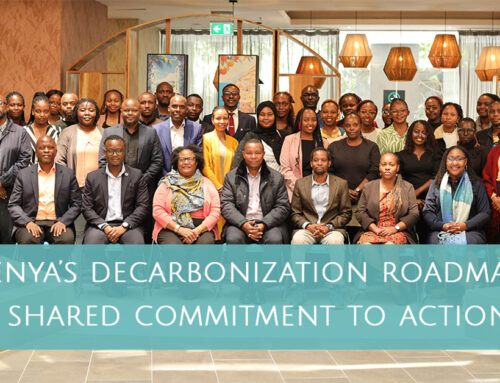Totok Sulistiyatno Wardoyo is making history.
In 2021, he was part of a GBPN project that will pave the way for Indonesia’s new capital city – Nusantara – to be a fully-fledged sustainable city.
Mr Wardoyo was among a team of GBPN experts who provided key technical advice to the Indonesian government to deliver a new Model Code for vertical housing (apartment buildings). This is the first step on a pathway towards something truly visionary – an entire city full of sustainable buildings – and sets the first minimum energy performance requirement for vertical housing (apartments) in Indonesia.
“It is exciting to be part of a project like this because we’ve never seen anything like this before in Indonesia,’ he said.
“The biggest challenge is working to achieve Net Zero in the new capital city using various technology and resources that are already there. For example, to convince the Ministries that, yes, the location isn’t easy but show them how they can enhance the natural resources and utilise the environmental situation there.”
Mr Wardoyo brings substantial experience to the role, having been a leading figure in sustainable building in Indonesia for over three decades.
Working with him on the GBPN team of experts were Jimmy Siswanto Juwana and Yodi Danusastro. Mr Juwana is an architect with a strong background in policy development, while Mr Danusastro is a civil engineer with expertise in green building standards and the environment.

Totok Sulistiyatno Wardoyo

Jimmy Siswanto Juwana

Yodi Danusastro
Mr Wardoyo said the team had worked together well because they had complementary skills, understood the issues and understood the need to ensure their recommendations would align with regulations already in place.
“Firstly we were collecting all the regulations from the Ministry of Public Works and Housing and the Ministry of Energy and Mineral Resources and trying to combine the regulations of both ministries,” he said.
“And then we were considering the new technology beyond what was already written on the regulations – for example, implementation of district cooling system, building automation system, Net Zero (NZ site energy, NZ Carbon Construction, NZ Carbon Operational Energy), share utility duct, and smart grids was not written yet, and also not just the buildings themselves but the infrastructure surrounding them.
“As well as optimising building envelope using integrated design facade, enhancing daylighting using solar tube, mirror duct, and light shelf, optimising air circulation and hybrid ventilation and air conditioning technologies and renewable energy.”
Real-world recommendations
He said the important consideration was how to make the recommendations practical.
“Indonesia is very supportive of green buildings and our green building standards are already very high,’ he said.
“But sometimes a standard is just a standard. It’s not implemented, even though the government and the developers are aware. One of the main barriers to implementing best practice in green building design is – is it practical?”
A key opportunity of the project is the sheer scale of it. The team has included key recommendations around smart grid and grid interactive technology. This includes building renewable energy like solar into the design and creating infrastructure capacity to enable feeding energy back into the grid when there is an oversupply.
“Something this big is challenging. My background is in smart grid systems in a small area. Here, we are designing on a much larger scale.”
“We are talking about smart grid and variable renewable energy and designing on the concept of integrated energy generation, on a scale never seen before in Indonesia.”
The Nusantara project is also of critical importance because it lays the foundation for Indonesia achieving Net Zero goals.
“Indonesia is one of the countries that doesn’t have a very clear roadmap for achieving net zero by 2050,’ he said.
“This is a good opportunity because if we can implement these sustainable technologies in the new capital city, it will be easier to replicate it in other cities using Nusantara as a model.”
For more information about the team’s work on the model code, click here.
Share This Story, Choose Your Platform!
Stay in touch with how we’re transforming the buildings sector
GBPN runs innovative building policy reform programs in key regions around the world that aim to tackle the climate emergency by decarbonising the buildings sector. Stay up to date with our newsletter.
Stay in touch with how we’re transforming the buildings sector
GBPN runs innovative building policy reform programs in key regions around the world that aim to tackle the climate emergency by decarbonising the buildings sector. Stay up to date with our newsletter.







